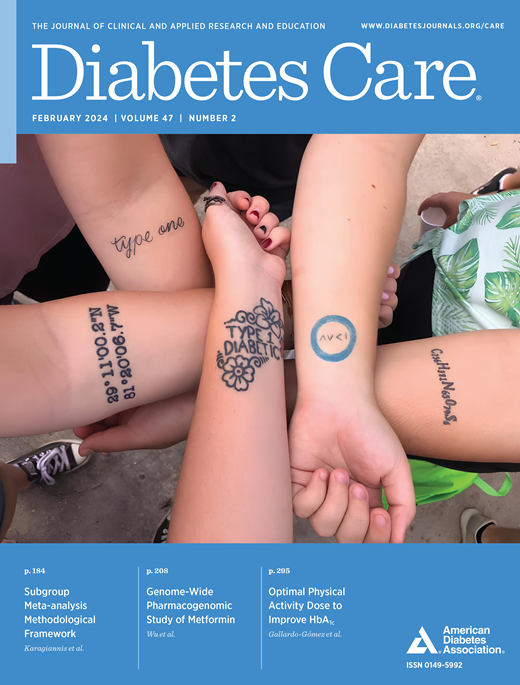基于胰岛素的减肥药物疗法:阻力运动能优化身体成分的变化吗?
IF 14.8
1区 医学
Q1 ENDOCRINOLOGY & METABOLISM
引用次数: 0
摘要
这篇叙述性综述强调了基于肠道源性营养刺激激素(胰高血糖素)的新型抗肥胖药物会在多大程度上导致瘦体重的减少,以及阻力运动对保持肌肉的重要性。在随机试验中,胰高血糖素样肽1受体激动剂(GLP-1RA)会导致体重大幅下降,与葡萄糖依赖性促胰岛素多肽(GIP)受体激动剂联用可能会增强这种效果。利拉鲁肽和赛马鲁肽(GLP-1RA)、替泽帕肽(GLP-1 和 GIP 受体双重激动剂)和雷他鲁肽(GLP-1、GIP 和胰高血糖素受体三重激动剂)是具有增量素激动剂活性的多肽类药物,可使超重和肥胖成人的体重减轻 15-24% 左右,同时对血压、胆固醇、血糖和胰岛素产生有益影响。然而,这些药物也会导致瘦体重快速显著下降(10% 或 6 公斤),相当于衰老十年或更长时间。随着年龄的增长,保持肌肉质量和功能对于避免肌肉疏松症和虚弱至关重要,而肌肉疏松症和虚弱与发病率和死亡率密切相关。研究表明,持续时间为 10 周的有监督阻力运动训练干预可以使男性和女性的瘦体重(∼3 公斤)和力量(∼25%)大幅增加。在低热量饮食后,有氧运动与利拉鲁肽的结合比单独使用任何一种方法都能更好地维持体重。在增量胰岛素治疗期间保持瘦体重可以减轻体重(和脂肪)在停止减肥药物治疗后的反弹。我们建议将有针对性的阻力运动训练作为胰岛素疗法的辅助疗法,在实现减脂的同时保留瘦体重,从而优化身体成分的变化。本文章由计算机程序翻译,如有差异,请以英文原文为准。
Incretin-Based Weight Loss Pharmacotherapy: Can Resistance Exercise Optimize Changes in Body Composition?
This narrative review highlights the degree to which new antiobesity medications based on gut-derived nutrient-stimulated hormones (incretins) cause loss of lean mass, and the importance of resistance exercise to preserve muscle. Glucagon-like peptide 1 receptor agonists (GLP-1RA) induce substantial weight loss in randomized trials, effects that may be enhanced in combination with glucose-dependent insulinotropic polypeptide (GIP) receptor agonists. Liraglutide and semaglutide (GLP-1RA), tirzepatide (GLP-1 and GIP receptor dual agonist), and retatrutide (GLP-1, GIP, and glucagon receptor triple agonist) are peptides with incretin agonist activity that induce ∼15–24% weight loss in adults with overweight and obesity, alongside beneficial impacts on blood pressure, cholesterol, blood glucose, and insulin. However, these agents also cause rapid and significant loss of lean mass (∼10% or ∼6 kg), comparable to a decade or more of aging. Maintaining muscle mass and function as humans age is crucial to avoiding sarcopenia and frailty, which are strongly linked to morbidity and mortality. Studies indicate that supervised resistance exercise training interventions with a duration >10 weeks can elicit large increases in lean mass (∼3 kg) and strength (∼25%) in men and women. After a low-calorie diet, combining aerobic exercise with liraglutide improved weight loss maintenance compared with either alone. Retaining lean mass during incretin therapy could blunt body weight (and fat) regain on cessation of weight loss pharmacotherapy. We propose that tailored resistance exercise training be recommended as an adjunct to incretin therapy to optimize changes in body composition by preserving lean mass while achieving fat loss.
求助全文
通过发布文献求助,成功后即可免费获取论文全文。
去求助
来源期刊

Diabetes Care
医学-内分泌学与代谢
CiteScore
27.80
自引率
4.90%
发文量
449
审稿时长
1 months
期刊介绍:
The journal's overarching mission can be captured by the simple word "Care," reflecting its commitment to enhancing patient well-being. Diabetes Care aims to support better patient care by addressing the comprehensive needs of healthcare professionals dedicated to managing diabetes.
Diabetes Care serves as a valuable resource for healthcare practitioners, aiming to advance knowledge, foster research, and improve diabetes management. The journal publishes original research across various categories, including Clinical Care, Education, Nutrition, Psychosocial Research, Epidemiology, Health Services Research, Emerging Treatments and Technologies, Pathophysiology, Complications, and Cardiovascular and Metabolic Risk. Additionally, Diabetes Care features ADA statements, consensus reports, review articles, letters to the editor, and health/medical news, appealing to a diverse audience of physicians, researchers, psychologists, educators, and other healthcare professionals.
 求助内容:
求助内容: 应助结果提醒方式:
应助结果提醒方式:


